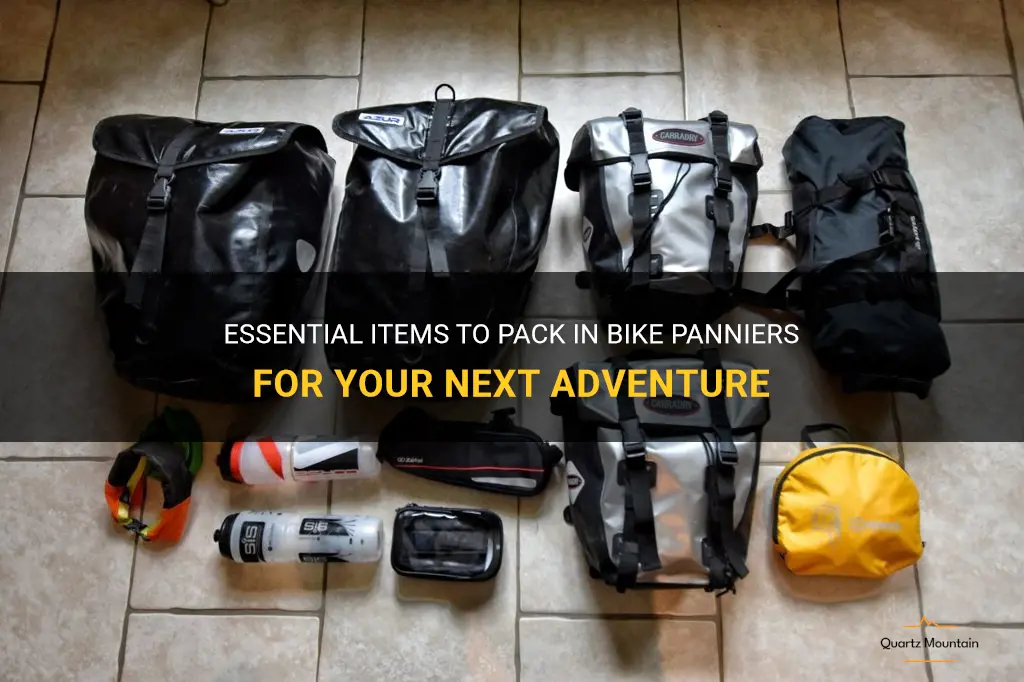
Are you an adventurous cyclist always on the lookout for your next thrilling bike expedition? If so, then you know the importance of having reliable and durable bike panniers to carry all your essential items. From crossing rugged terrains to braving unpredictable weather conditions, these bike panniers are designed to withstand it all. But what are the essential items you should pack in your panniers for your next adventure? Read on to discover the must-haves that will ensure a successful and enjoyable biking experience like never before.
What You'll Learn
- What are some essential items to pack in bike panniers for a long-distance cycling trip?
- How should I prioritize packing my bike panniers to make sure I have everything I need?
- Are there any specific types of clothing or gear that are recommended for packing in bike panniers?
- What are some space-saving tips for packing bike panniers efficiently?
- Are there any weight limitations or restrictions for packing bike panniers, and if so, how can I make sure I stay within them?

What are some essential items to pack in bike panniers for a long-distance cycling trip?
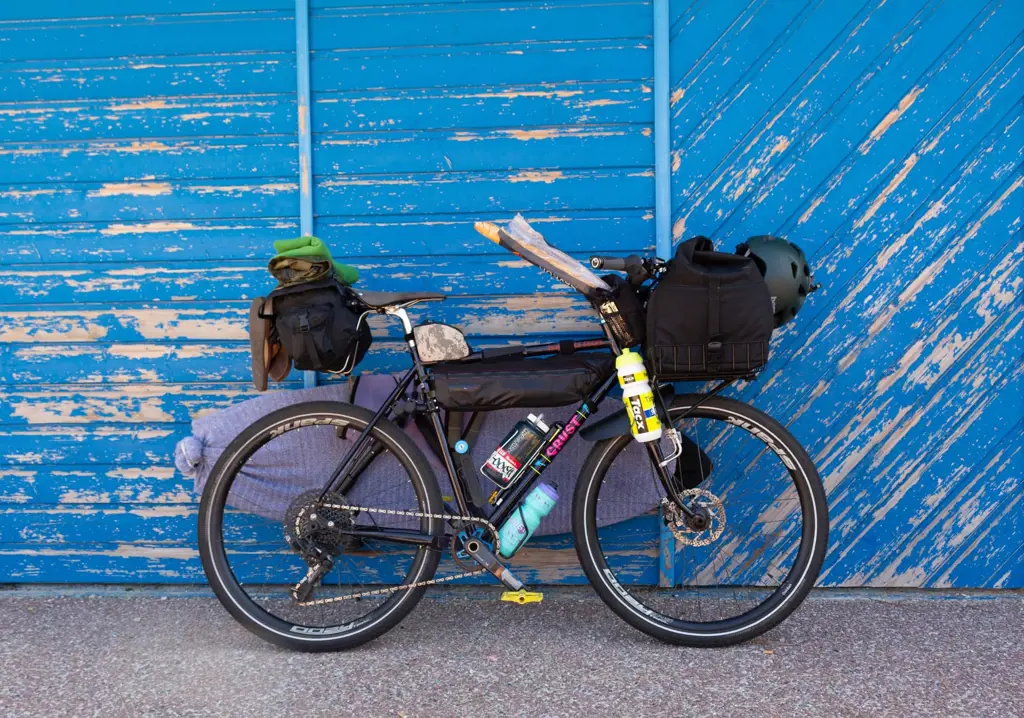
Heading: What are some essential items to pack in bike panniers for a long-distance cycling trip?
Introduction:
Embarking on a long-distance cycling trip requires careful planning and preparation. One of the most important aspects of trip planning is packing the right gear. Bike panniers are essential for carrying your belongings on the journey, and strategic packing is crucial to ensure a comfortable and successful trip. In this article, we will discuss some essential items to pack in bike panniers for a long-distance cycling trip.
Clothing:
When packing clothing for a long-distance cycling trip, it's important to consider the weather conditions and the duration of your journey. Pack enough cycling jerseys, shorts, and socks for each day of the trip, keeping in mind that you might not have access to laundry facilities. Additionally, pack a rain jacket, a warm layer for colder temperatures, and a set of comfortable off-bike clothes for rest days or evenings.
Camping Gear:
If you're planning to camp along the way, packing the right camping gear is crucial. A lightweight tent, a compact sleeping bag, and a sleeping pad are essential items to ensure a comfortable night's sleep. Don't forget to pack a camping stove, cookware, and utensils if you plan on cooking your meals. Consider the weight and size of each item to optimize space in your panniers.
Repair Kit:
Being prepared for mechanical issues or flat tires is essential on a long-distance cycling trip. Pack a compact bike repair kit that includes tire levers, a spare inner tube, a pump, a multi-tool, and a chain lube. Additionally, carry a few extra spokes and a spoke wrench in case of wheel problems. Familiarize yourself with basic bike repairs and carry a small manual that can guide you through any necessary fixes.
Food and Water:
Proper nutrition and hydration are key to maintaining energy levels during a long-distance cycling trip. Pack lightweight and non-perishable foods such as energy bars, nuts, and dehydrated meals. Carry a water filter or purification tablets to ensure a clean water source along the way. It's important to plan your food and water supplies according to the availability of resources on your route.
Personal Hygiene and First Aid:
Maintaining personal hygiene and tending to minor injuries is crucial for your well-being on a long-distance cycling trip. Pack a compact toiletry kit with essentials like soap, toothbrush, and toilet paper. Carry a basic first aid kit that includes band-aids, antiseptic ointment, pain relievers, and any necessary prescription medication.
Packing your bike panniers for a long-distance cycling trip requires careful consideration of your needs and the available space. By packing the right clothing, camping gear, repair kit, food, water, and personal hygiene items, you can ensure a comfortable and successful journey. Prioritize lightweight and compact items that serve multiple purposes to optimize space and minimize weight. Always be prepared for unforeseen circumstances and stay flexible with your packing choices. With the right gear, you'll be well-equipped to tackle any challenges that come your way during your long-distance cycling adventure.
Essential Packing Guide for a Cruise: What to Pack for a Perfect Conde Nast Travel Experience
You may want to see also

How should I prioritize packing my bike panniers to make sure I have everything I need?
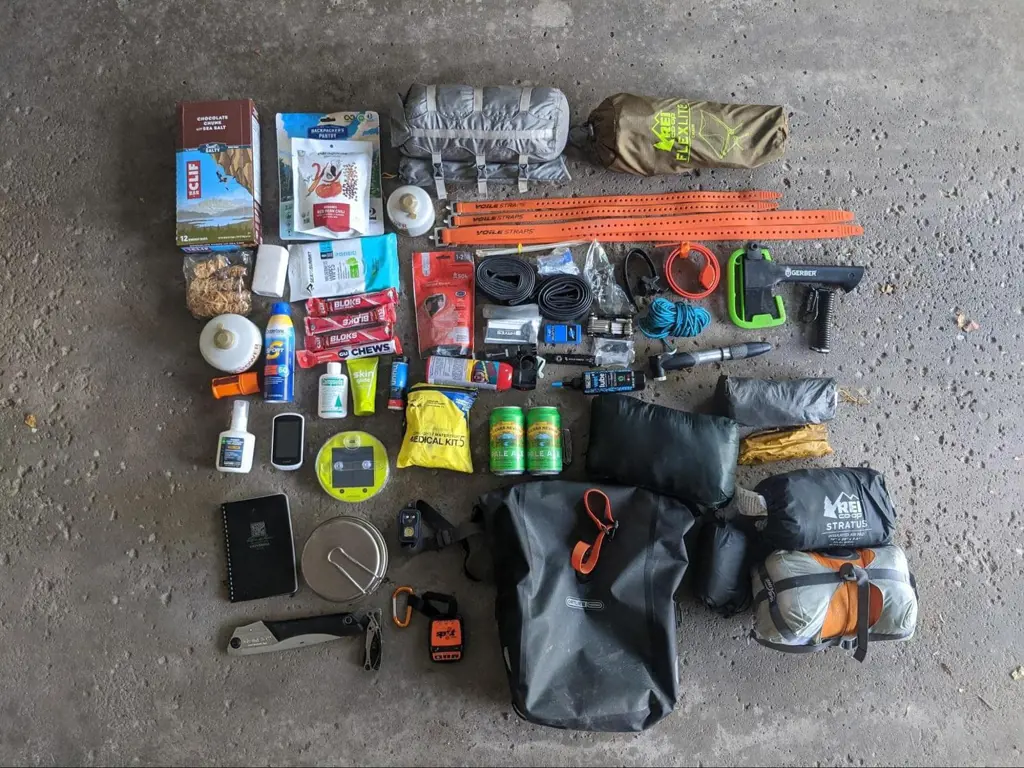
Packing your bike panniers efficiently is essential for a successful cycling trip. By prioritizing your items properly, you can ensure that you have everything you need while keeping the weight distribution balanced and easy to manage. In this article, we will discuss how to prioritize packing your bike panniers to make sure you have everything you need.
- Make a checklist: Before you start packing, it's crucial to make a checklist of all the essential items you'll need for your trip. This could include clothing, toiletries, camping gear, cooking equipment, and any other necessary items. By having a checklist, you can ensure that you don't forget any crucial items and avoid overpacking unnecessary things.
- Divide items into categories: Once you have a checklist, divide the items into categories based on their importance and frequency of use. For example, clothing and toiletries are essential items that you'll use every day, while camping gear and cooking equipment may be used less frequently. By categorizing your items, you can prioritize the ones that you'll need more often.
- Allocate space: Assess the size and capacity of your panniers and allocate space based on the categories you created. Place the essential items that you'll need every day in easily accessible locations, such as the top of your panniers or in external pockets. Less frequently used items can be packed deeper inside or at the bottom, as they won't need to be accessed as frequently.
- Balance the weight: It's important to distribute the weight evenly between your panniers to maintain balance while riding. Place heavier items at the bottom and towards the center of each pannier to keep the bike stable. Avoid overloading one side more than the other. Balancing the weight will make your ride more comfortable and safer.
- Consider weather conditions: Depending on the weather conditions you anticipate, you may need to prioritize certain items. If you expect rain, make sure to pack rain gear and other essentials to keep you dry. Similarly, if you'll be riding in hot conditions, prioritize lightweight and breathable clothing.
- Keep frequently used items easily accessible: Items that you may need to access quickly, such as snacks, a map, or your phone, should be placed in external pockets or in easily reachable compartments. This will save you time and effort when you need to grab something on the go.
- Pack strategically: Utilize the available space efficiently by rolling up clothes tightly or using compression bags to reduce the volume of bulky items. Distribute smaller items within larger ones to save space and keep things organized. Consider using dry bags or waterproof covers for items that need protection from rain or moisture.
- Test your setup: Before hitting the road, take a short test ride to ensure that your bike is handling well with the packed panniers. Make any necessary adjustments to the weight distribution or item placement to optimize your comfort and stability.
Remember that each cyclist's packing priorities may vary based on personal preferences, the duration of the trip, and the specific cycling conditions. By following these steps and making adjustments as needed, you can pack your bike panniers efficiently and ensure you have everything you need for a successful cycling trip.
Essential Items to Pack for an Alaska Cruise in April
You may want to see also

Are there any specific types of clothing or gear that are recommended for packing in bike panniers?
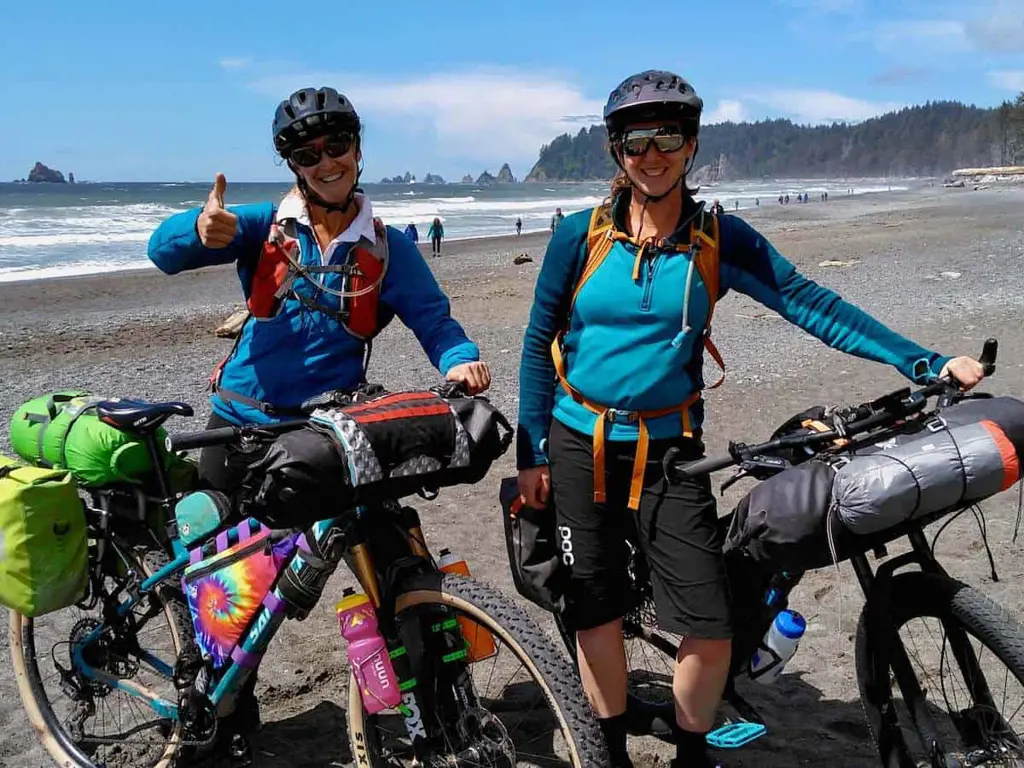
When embarking on a bike tour or long-distance cycling trip, it's important to pack wisely and efficiently in order to have a smooth and enjoyable journey. One key aspect of packing for a bike tour is choosing the right clothing and gear to bring along. Bike panniers are a popular choice for carrying gear on a bike, and knowing what to pack in them can make a big difference in your comfort and overall experience on the road.
Here are some specific types of clothing and gear that are recommended for packing in bike panniers:
- Cycling-specific clothing: Investing in cycling-specific clothing is highly recommended for a bike tour. These garments are designed with features like moisture-wicking fabric, breathable mesh panels, and padded seats to keep you comfortable in the saddle for long hours. Pack a few pairs of cycling shorts, jerseys, and socks to ensure you have enough outfits for the duration of your trip.
- Rain gear: Weather can be unpredictable during a bike tour, so it's essential to have proper rain gear to keep you dry. Pack a lightweight, waterproof jacket and pants that can easily be rolled up and stored in your panniers. It's also a good idea to bring a waterproof cover for your panniers in case of heavy rain.
- Layering options: Climate conditions can vary greatly during a bike tour, so having layers of clothing is key. Pack a mix of base layers, mid-layers, and outer layers that can be easily added or removed as needed. Opt for clothing made from moisture-wicking materials to help regulate your body temperature and keep you comfortable.
- Cycling shoes: Having a proper pair of cycling shoes can greatly enhance your performance and comfort on the bike. Look for shoes that offer a good fit, stiff soles for efficient pedaling, and breathable uppers. Consider bringing an extra pair of regular shoes for off-bike activities or casual wear.
- Repair and maintenance tools: Along with clothing, it's important to pack a small set of repair and maintenance tools to keep your bike in good working condition. A multitool, tire levers, spare inner tubes, a patch kit, and a small pump are essentials that can fit easily into your panniers. It's also a good idea to bring a small bottle of chain lube to keep your bike running smoothly.
- Personal care items: Don't forget to pack personal care items to keep yourself clean and comfortable during your trip. Essentials like toiletries, sunscreen, insect repellent, and a small first aid kit should be included in your packing list. Consider packing lightweight and compact versions of these items to save space in your panniers.
While these are some specific types of clothing and gear that are recommended for packing in bike panniers, it's important to note that the exact items you choose will depend on factors such as the duration of your trip, the climate you'll be cycling in, and your personal preferences. Make sure to invest in high-quality gear that is durable and suited to your needs. Happy cycling!
Essential Items to Pack for a Russian River Cruise
You may want to see also

What are some space-saving tips for packing bike panniers efficiently?
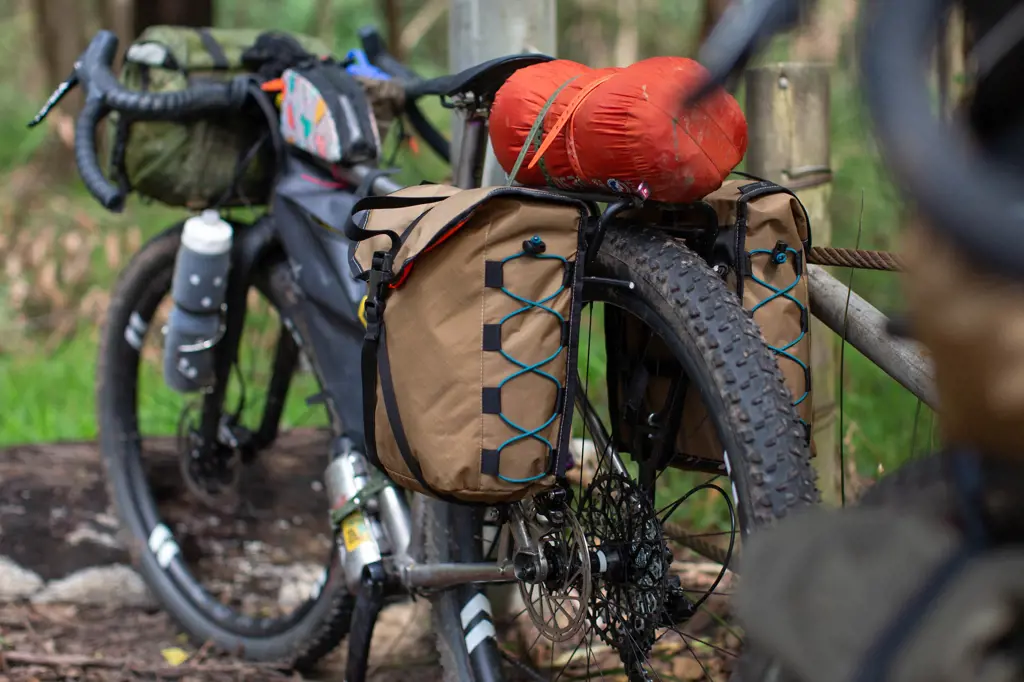
Are you planning a bike touring trip and looking for space-saving tips to pack your panniers efficiently? Packing your bike panniers can be a bit of a challenge, especially if you need to fit all your gear and essentials into a limited space. However, with some careful planning and strategic packing techniques, you can maximize the space available and make the most of your bike panniers.
Here are some space-saving tips for packing your bike panniers efficiently:
- Plan and prioritize: Before starting to pack, make a list of all the essential items you need to carry. This could include camping gear, clothes, food, tools, and other necessities. Prioritize the items based on their importance and frequency of use. This will help you to allocate the space available accordingly.
- Use compression sacks: Compression sacks are a great tool for saving space in your panniers. They allow you to compress bulky items such as clothing and sleeping bags, reducing their volume significantly. Place your clothes and sleeping bag in the compression sacks and squeeze out all the air to create compact packages that can be easily packed into your panniers.
- Roll your clothes: Rolling your clothes instead of folding them can help save space in your panniers. This technique not only reduces the volume occupied by your clothes but also minimizes wrinkles. Roll each item tightly and place them side by side in the pannier to maximize the space available.
- Utilize empty spaces: Look for any empty spaces or gaps within your panniers and utilize them effectively. For example, you can stuff socks or underwear into the gaps between larger items or inside shoes. Utilizing every available space will help you to make the most efficient use of the limited storage space in your panniers.
- Pack heavier items at the bottom: When packing your panniers, it's important to distribute the weight evenly to maintain stability while riding. To achieve this, pack heavier items at the bottom of the panniers. This will help to lower the center of gravity and provide a more stable ride.
- Use lightweight and compact gear: Opt for lightweight and compact gear whenever possible. Choose camping equipment, cooking utensils, and other items that are specifically designed for backpacking or bike touring. These items are typically designed to be lightweight and take up less space, allowing you to pack more efficiently.
- Secure loose items: To prevent items from shifting and creating unnecessary bulk in your panniers, secure them tightly. Use straps or bungee cords to secure items to the interior of your panniers. This will minimize movement and maximize the usable space in your panniers.
- Consider alternative storage options: If you find that your panniers are still too small to fit all your gear, consider using additional storage options. You can attach a small rack or basket to your bike frame to carry oversized items. Additionally, consider using a handlebar bag or a frame bag to store frequently accessed items or small essentials.
In conclusion, packing your bike panniers efficiently is essential for a comfortable and enjoyable bike touring experience. By planning and prioritizing your gear, utilizing compression sacks, rolling your clothes, maximizing empty spaces, packing heavier items at the bottom, using lightweight and compact gear, securing loose items, and considering alternative storage options, you can optimize the space available in your bike panniers and make the most of your bike tour.
Essential Gear for Your Rugged Maniac Adventure: What to Pack
You may want to see also

Are there any weight limitations or restrictions for packing bike panniers, and if so, how can I make sure I stay within them?
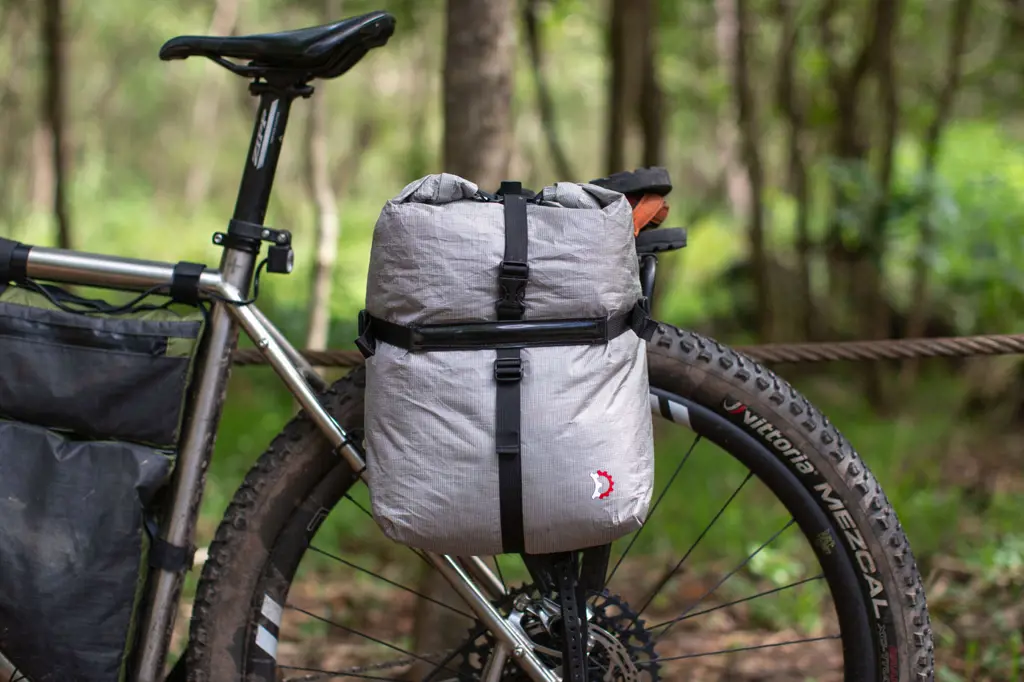
When it comes to packing your bike panniers, weight limitations and restrictions can vary depending on the specific panniers and racks you are using. It is important to be aware of these limitations to ensure a safe and comfortable riding experience. Here are some tips to help you stay within the weight limits and maximize the space in your panniers.
- Check your panniers and racks: Before packing your panniers, make sure to thoroughly inspect your panniers and racks for any weight limitations or restrictions specified by the manufacturer. These limitations can usually be found in the product manual or on the manufacturer's website. It is essential to follow these guidelines to prevent any damage to your panniers or racks, or potential accidents while riding.
- Distribute the weight evenly: Even if your panniers have a high weight limit, it is important to distribute the weight evenly between both sides of your bike. This will help maintain the bike's balance and stability, especially when riding over uneven terrain. Avoid overloading one side of the bike, as it can cause the bike to tip over or affect your ability to steer.
- Consider the total weight: Take into account not only the weight of the items you are packing in your panniers but also the weight of the panniers themselves. Some panniers can be quite heavy, so be mindful of this when packing. Consider lighter alternatives if weight is a concern.
- Pack the heaviest items on the bottom: When loading your panniers, place the heaviest items on the bottom to keep the center of gravity low. This will help with the bike's stability and handling. Pack lighter and bulkier items on top.
- Utilize compression bags or packing cubes: To maximize the space in your panniers and ensure a tight fit, consider using compression bags or packing cubes. These can help condense your items and keep them organized. Additionally, they can help prevent your items from shifting during the ride.
- Test the weight and balance: Once you have packed your panniers, take a few test rides to ensure that the weight is distributed evenly and the bike feels balanced. Make any necessary adjustments before embarking on your trip.
- Check weight restrictions for transportation: If you plan on using public transportation or shipping your bike with packed panniers, be aware of weight restrictions imposed by the transportation company. These restrictions can vary, so it is important to check with the specific company beforehand.
Example:
Let's say you are planning a bike touring trip and have a pair of panniers with a weight limit of 15 kilograms per side. Before you start packing, make sure to distribute the weight evenly between both panniers. Avoid overloading one side, as it can affect your balance and steering.
Pack the heaviest items, such as camping equipment and tools, on the bottom. This will keep the center of gravity low and maintain the bike's stability. Place lighter and bulkier items, such as clothing and food, on top. Consider using compression bags or packing cubes to maximize space and keep your items organized.
Once you have packed your panniers, take a few test rides to check the weight and balance. Make any necessary adjustments before setting off on your trip.
Lastly, if you plan on using public transportation or shipping your bike, check the weight restrictions imposed by the company. Some transportation methods have strict weight limitations, and exceeding them may result in additional fees or even refusal to transport your bike.
By following these tips, you can ensure that you stay within the weight limitations of your bike panniers and have a safe and enjoyable biking experience. Happy pedaling!
Essential Items to Pack for a Memorable Trip to Bar Harbor in August
You may want to see also
Frequently asked questions
When packing clothing in bike panniers, it is important to fold and roll your clothing items tightly to maximize space and prevent wrinkles. Place heavier items, such as jeans or sweaters, at the bottom of the pannier and then layer lighter clothing items, such as t-shirts or socks, on top. Utilize the corners and crevices of the pannier to tuck in smaller clothing items or accessories.
When packing food in bike panniers for a long trip, it is important to choose lightweight and non-perishable items. Some popular options include energy bars, nuts and dried fruits, instant noodles or dehydrated meals, and canned goods with pull-tab lids. It is also a good idea to pack some extra water or powdered sports drink mix for hydration.
Yes, you can pack electronics in bike panniers, but it is important to ensure they are well-protected from any potential impacts or moisture. Consider using sturdy padded cases or waterproof bags to keep your electronics safe. It is also recommended to pack electronics in the top or middle section of the pannier, surrounded by soft clothing or extra padding to provide additional protection.
When packing bike tools and spare parts in panniers, it is important to keep them organized and easily accessible. Consider using small pouches or ziplock bags to group similar items together, such as tire repair supplies or spare parts. Place these pouches or bags in a designated section of the pannier where they can be easily reached, such as in a side pocket or on top of other items. Additionally, it is a good idea to wrap any sharp or pointed tools in a cloth or towel to prevent them from poking through the pannier or damaging other items.







